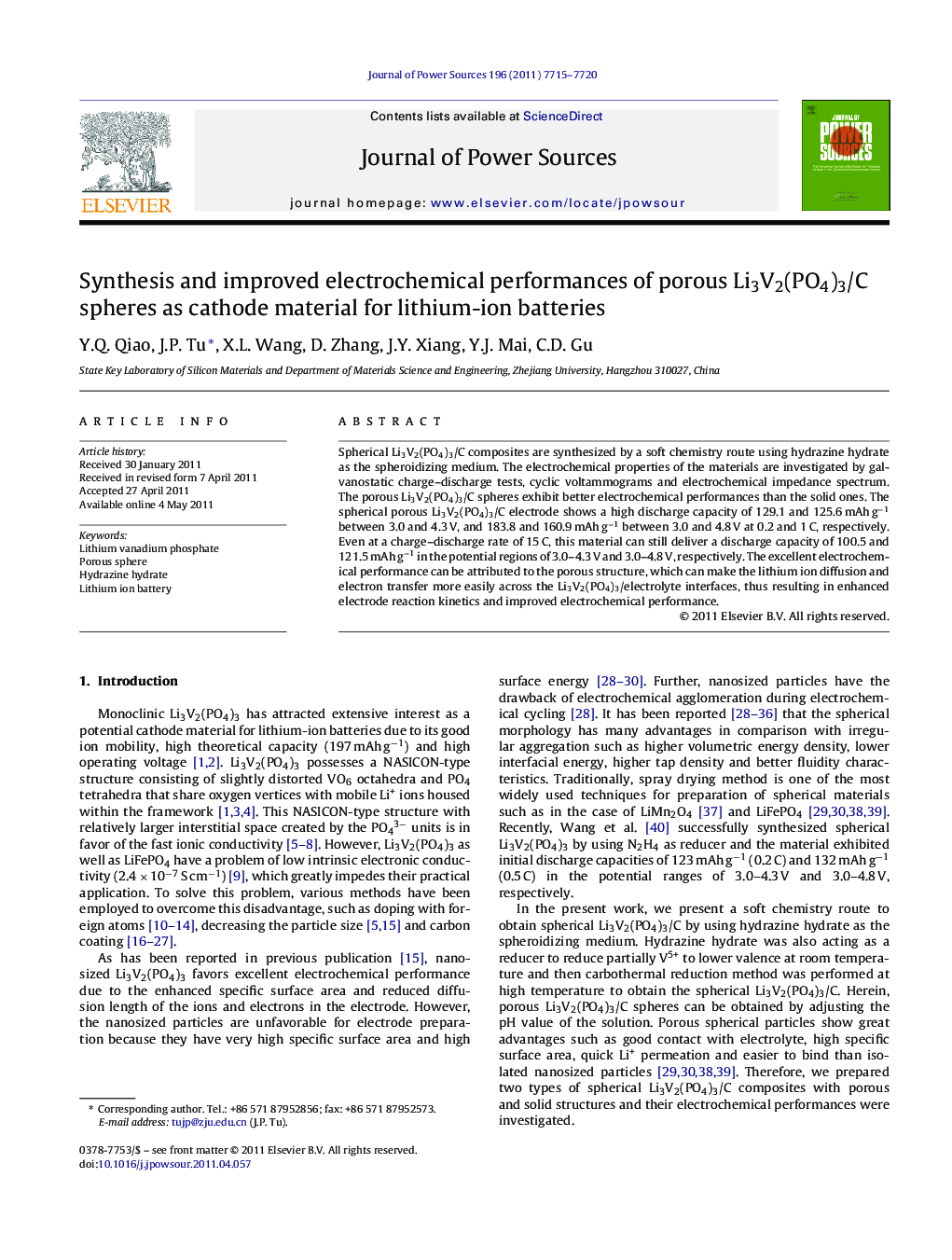| Article ID | Journal | Published Year | Pages | File Type |
|---|---|---|---|---|
| 1293394 | Journal of Power Sources | 2011 | 6 Pages |
Spherical Li3V2(PO4)3/C composites are synthesized by a soft chemistry route using hydrazine hydrate as the spheroidizing medium. The electrochemical properties of the materials are investigated by galvanostatic charge–discharge tests, cyclic voltammograms and electrochemical impedance spectrum. The porous Li3V2(PO4)3/C spheres exhibit better electrochemical performances than the solid ones. The spherical porous Li3V2(PO4)3/C electrode shows a high discharge capacity of 129.1 and 125.6 mAh g−1 between 3.0 and 4.3 V, and 183.8 and 160.9 mAh g−1 between 3.0 and 4.8 V at 0.2 and 1 C, respectively. Even at a charge–discharge rate of 15 C, this material can still deliver a discharge capacity of 100.5 and 121.5 mAh g−1 in the potential regions of 3.0–4.3 V and 3.0–4.8 V, respectively. The excellent electrochemical performance can be attributed to the porous structure, which can make the lithium ion diffusion and electron transfer more easily across the Li3V2(PO4)3/electrolyte interfaces, thus resulting in enhanced electrode reaction kinetics and improved electrochemical performance.
► Spherical Li3V2(PO4)3/C composites are prepared by a soft chemistry route. ► Hydrazine hydrate is used as the spheroidizing medium. ► The porous spherical Li3V2(PO4)3/C shows excellent electrochemical performances. ► Porous structure can enhance electrode reaction kinetics and improve performance.
